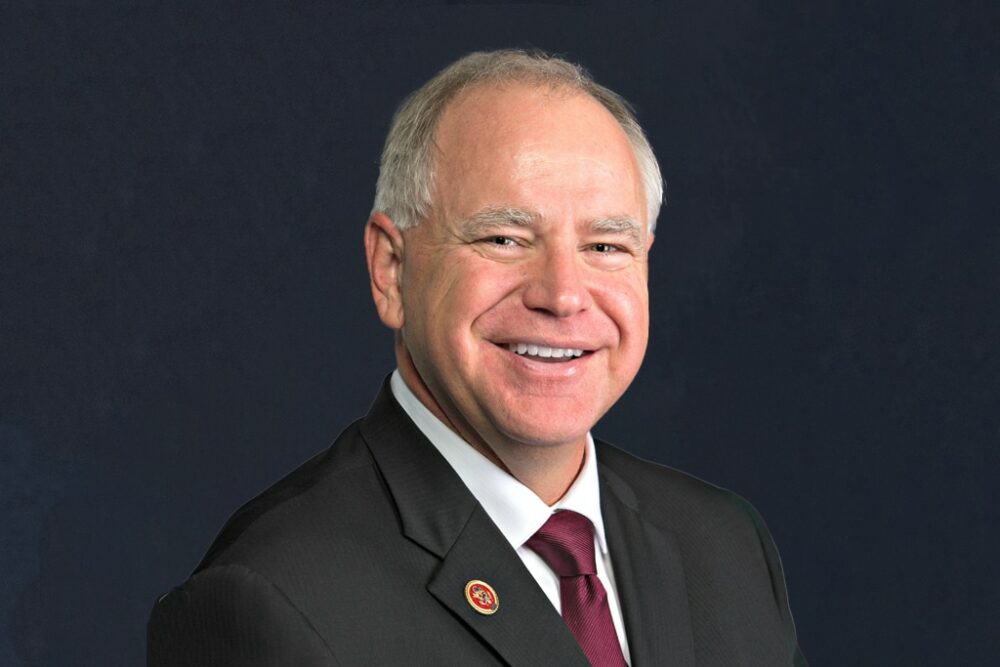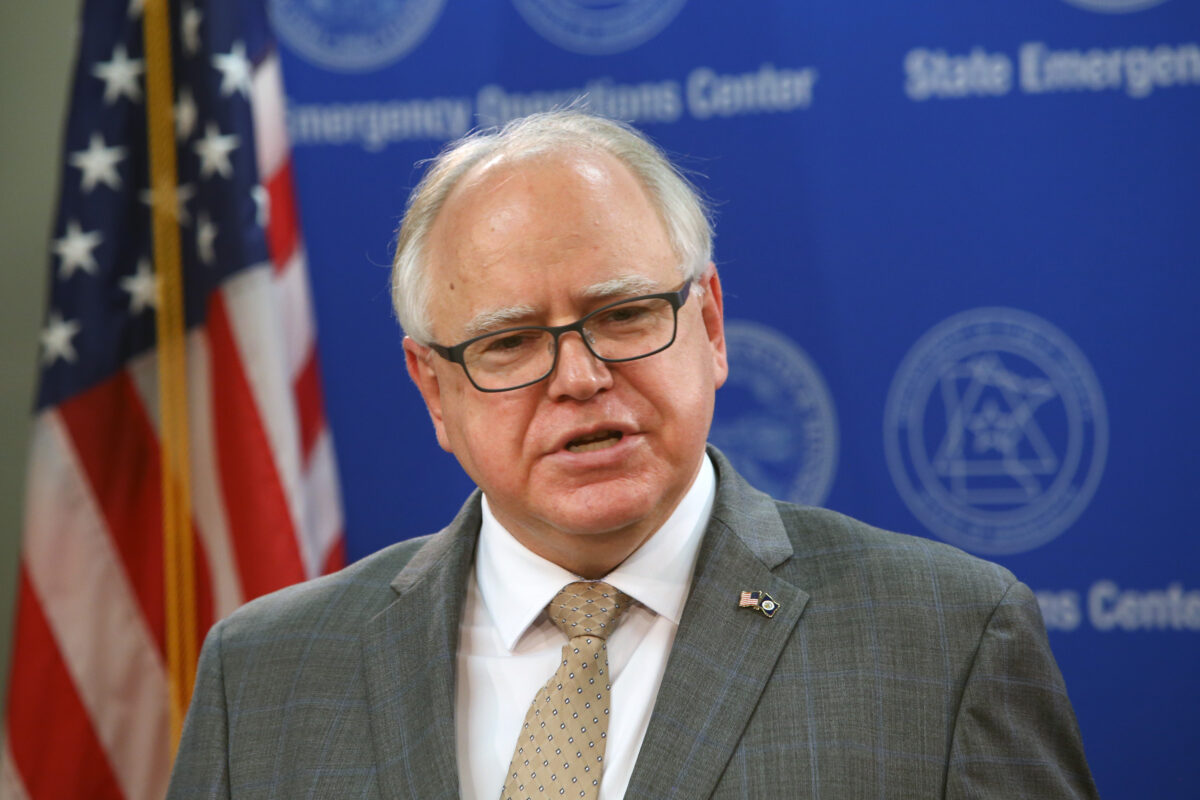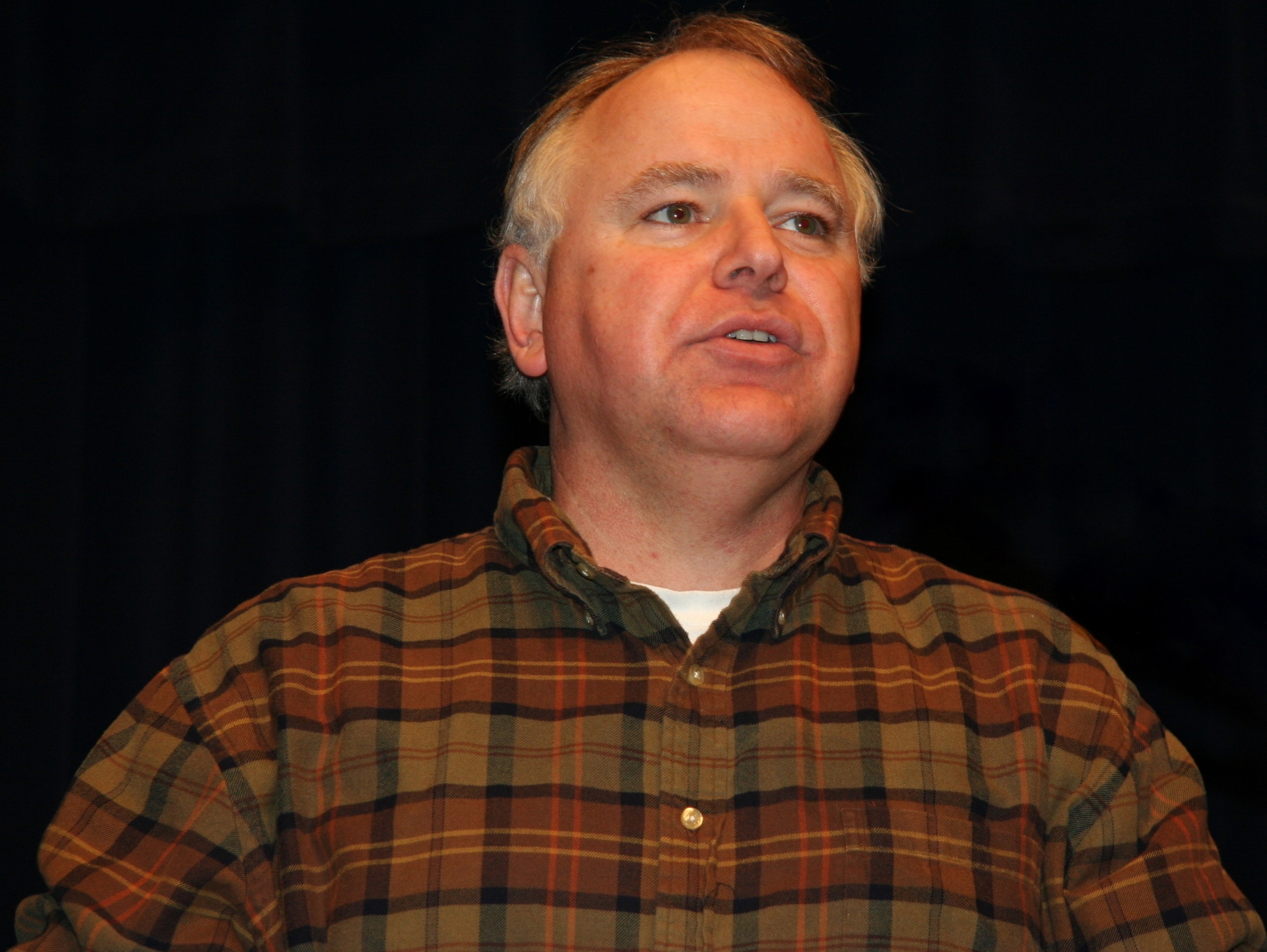Tim Walz: Tim Walz Minnesota

Tim Walz is the current Governor of Minnesota, a position he has held since 2019. He is a member of the Democratic-Farmer-Labor Party (DFL). Before becoming governor, Walz had a long career in public service, serving in the United States House of Representatives from 2007 to 2019. He also served in the Minnesota National Guard for 24 years.
Political Background
Tim Walz’s political journey began in the Minnesota House of Representatives, where he served from 2003 to 2007. During this time, he gained valuable experience in state government and established himself as a voice for his constituents. His service in the Minnesota National Guard, where he rose to the rank of Command Sergeant Major, instilled in him a deep sense of duty and a commitment to serving others.
Walz’s entry into the United States House of Representatives in 2007 marked a significant milestone in his political career. He represented Minnesota’s 1st congressional district, a largely rural area, and focused on issues such as agriculture, veterans’ affairs, and education. His work in Congress earned him a reputation as a pragmatic and bipartisan legislator.
Key Policy Initiatives and Accomplishments
As Governor, Tim Walz has focused on several key policy areas. His administration has made significant progress in addressing issues such as education, healthcare, and economic development.
Education
Governor Walz has prioritized education reform, aiming to improve access to quality education for all Minnesotans. His administration has implemented policies aimed at increasing funding for public schools, expanding early childhood education programs, and addressing disparities in educational outcomes.
Healthcare
Walz has made healthcare a top priority, working to expand access to affordable and quality healthcare for all Minnesotans. His administration has implemented policies aimed at expanding Medicaid coverage, lowering prescription drug costs, and improving mental health services.
Economic Development
Governor Walz has focused on promoting economic growth and job creation in Minnesota. His administration has implemented policies aimed at supporting small businesses, investing in infrastructure, and attracting new businesses to the state.
Current Political Priorities and Challenges
Governor Walz faces a number of challenges in his current term, including the ongoing COVID-19 pandemic, economic recovery, and social justice issues.
COVID-19 Pandemic
The COVID-19 pandemic has had a significant impact on Minnesota, and Governor Walz has taken a leading role in addressing the crisis. His administration has implemented a number of public health measures, including mask mandates and social distancing guidelines, to slow the spread of the virus.
Economic Recovery
The pandemic has had a significant impact on Minnesota’s economy, leading to job losses and business closures. Governor Walz has prioritized economic recovery, working to support businesses and create new jobs.
Social Justice
Minnesota has faced a number of social justice issues in recent years, including racial injustice and police brutality. Governor Walz has pledged to address these issues, working to promote racial equity and reform the criminal justice system.
Minnesota’s Political Landscape

Minnesota’s political landscape is known for its competitive nature and a history of close elections. The state has a reputation for being a battleground state in national elections, with both Democrats and Republicans vying for control.
Political Affiliations and Demographics
Minnesota’s political affiliations are influenced by a diverse population and geographic distribution. The state has a history of strong labor unions, which has contributed to a traditionally Democratic base. However, the state’s rural areas tend to lean more Republican.
- The Twin Cities metropolitan area, including Minneapolis and St. Paul, is a Democratic stronghold, with a high concentration of urban voters who tend to support progressive policies.
- Outside the Twin Cities, the state’s rural areas are more conservative, with voters often aligning with Republican values.
- Minnesota has a large Scandinavian heritage, which has historically influenced its political culture. Scandinavian values, such as social responsibility and a strong social safety net, have contributed to the state’s progressive leanings.
- Minnesota has a diverse population, with significant communities of immigrants and people of color. These communities often bring diverse perspectives and political priorities, influencing the state’s political landscape.
Impact of National Politics
National political trends have a significant impact on Minnesota’s political landscape. The state’s competitive nature often reflects national political dynamics.
- In recent years, Minnesota has become a battleground state in presidential elections, with both Democrats and Republicans focusing their efforts on winning the state’s electoral votes.
- National political issues, such as healthcare, education, and the economy, resonate with Minnesota voters and often influence their voting decisions.
- National political polarization has also affected Minnesota’s political landscape, with increasing partisan divides and a growing sense of political gridlock.
Minnesota’s Economy and Social Issues

Minnesota boasts a diverse and robust economy, known for its strong manufacturing, agriculture, and technology sectors. However, the state also faces various social challenges, impacting its residents and communities.
Economic Performance and Key Industries
Minnesota’s economy is characterized by its diverse industrial base, contributing to its overall stability and resilience. Key industries driving the state’s economic growth include:
- Manufacturing: Minnesota is a significant manufacturing hub, with industries like medical devices, food processing, and machinery contributing significantly to the state’s GDP. Companies like Medtronic, 3M, and Cargill are prominent players in these sectors.
- Agriculture: Agriculture remains a vital part of Minnesota’s economy, with the state being a major producer of corn, soybeans, and dairy products. The agricultural sector provides employment and contributes to the state’s food production and supply chain.
- Technology: Minnesota’s technology sector is rapidly growing, driven by companies like Best Buy, Target, and General Mills, which are investing heavily in innovation and digital transformation. The state also has a strong presence in software development, data analytics, and cybersecurity.
Challenges Facing Minnesota’s Economy
Despite its economic strengths, Minnesota faces certain challenges that impact its growth and prosperity. These challenges include:
- Income Inequality: Minnesota has a significant income gap between the wealthiest and poorest residents. This disparity affects access to quality education, healthcare, and other essential services, creating social and economic challenges.
- Cost of Living: The cost of living in Minnesota, particularly in major metropolitan areas like Minneapolis and St. Paul, has been rising steadily, making it difficult for some residents to afford housing, transportation, and other necessities.
- Skills Gap: The state faces a skills gap, with a mismatch between the skills employers need and the skills available in the workforce. This can lead to difficulties in filling critical positions and hinder economic growth.
Education in Minnesota
Minnesota has a long-standing tradition of strong public education, with its schools consistently ranking among the best in the nation. However, the state faces challenges in ensuring equitable access to quality education for all students, particularly those from disadvantaged backgrounds.
- Funding Disparities: There are significant funding disparities between school districts in Minnesota, with wealthier districts often having more resources than those in lower-income areas. This disparity can lead to unequal educational opportunities for students.
- Achievement Gap: Minnesota has an achievement gap, with students of color and students from low-income families often performing below their white and higher-income peers. This gap highlights the need for interventions and programs to address systemic inequities in education.
- Teacher Shortages: Minnesota faces a growing shortage of teachers, particularly in high-need areas like special education and STEM fields. This shortage can lead to larger class sizes and a decline in the quality of education.
Healthcare in Minnesota, Tim walz minnesota
Minnesota has a strong healthcare system, with a high concentration of hospitals, clinics, and medical professionals. However, the state faces challenges in ensuring affordable and accessible healthcare for all residents.
- Rising Healthcare Costs: Healthcare costs in Minnesota have been rising steadily, making it difficult for some residents to afford necessary medical care. This has led to increased rates of uninsured and underinsured individuals.
- Rural Healthcare Access: Rural areas in Minnesota often face challenges in accessing quality healthcare services, with limited access to specialists and hospitals. This can lead to health disparities between urban and rural residents.
- Mental Health Services: Minnesota has a shortage of mental health professionals, particularly in rural areas. This shortage can make it difficult for residents to access mental health services, leading to increased rates of mental health issues.
Crime in Minnesota
Minnesota has a relatively low crime rate compared to other states. However, the state faces challenges related to crime, particularly in urban areas.
- Violent Crime: While Minnesota’s overall crime rate is low, the state has seen an increase in violent crime in recent years, particularly in major cities like Minneapolis. This rise in violent crime has raised concerns about public safety.
- Drug Abuse: Minnesota has faced a growing problem with drug abuse, particularly opioid addiction. This has led to an increase in overdoses and related health issues, as well as crime associated with drug trafficking.
- Gang Activity: Gang activity is a concern in some parts of Minnesota, particularly in urban areas. Gang violence can contribute to crime and instability in communities.
Tim walz minnesota – Tim Walz, the governor of Minnesota, has faced numerous challenges during his tenure, including the COVID-19 pandemic and the ongoing economic uncertainty. While these issues are significant, it’s important to remember that even in the face of such adversity, unexpected events can occur, as seen in the recent helicopter crash into a Hilton hotel.
This tragic incident serves as a stark reminder of the fragility of life and the importance of preparedness in the face of unforeseen circumstances. As Governor Walz navigates these complex issues, he must continue to prioritize the safety and well-being of Minnesota residents.
